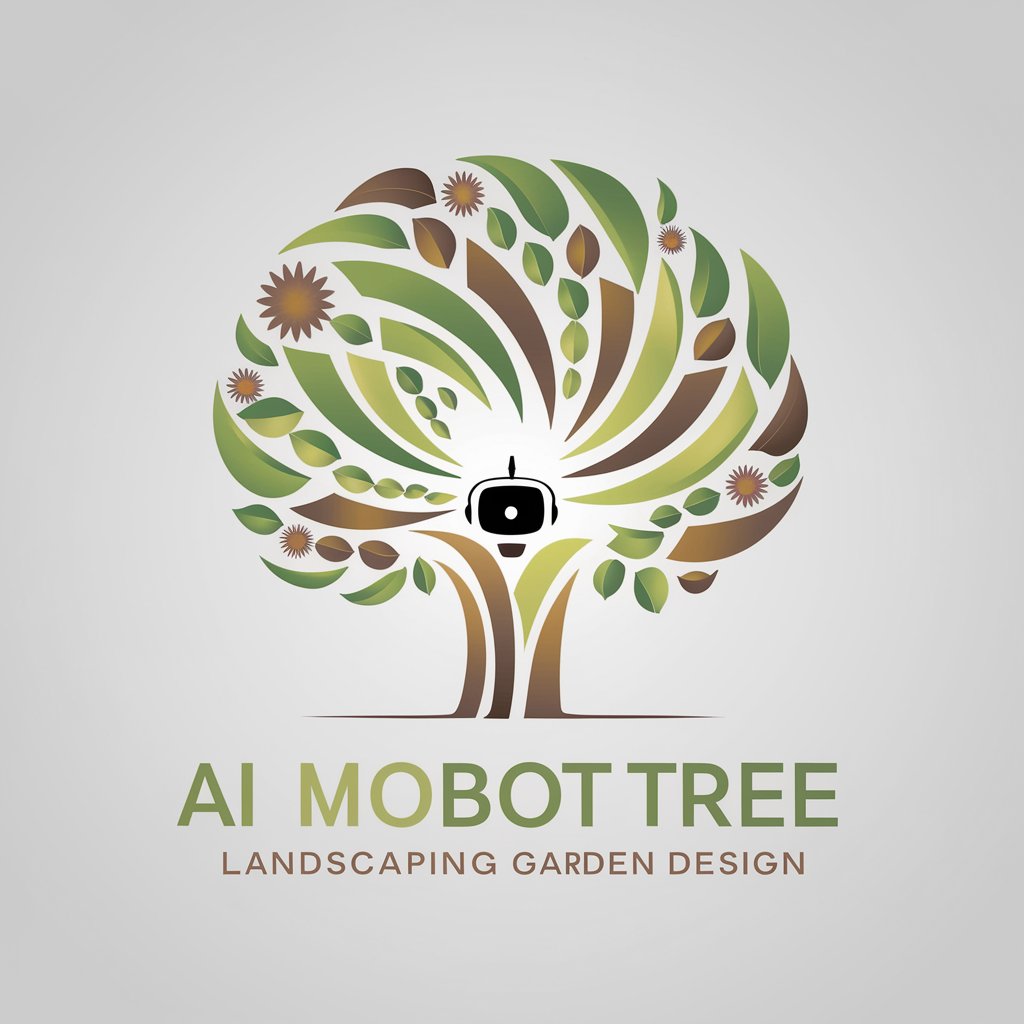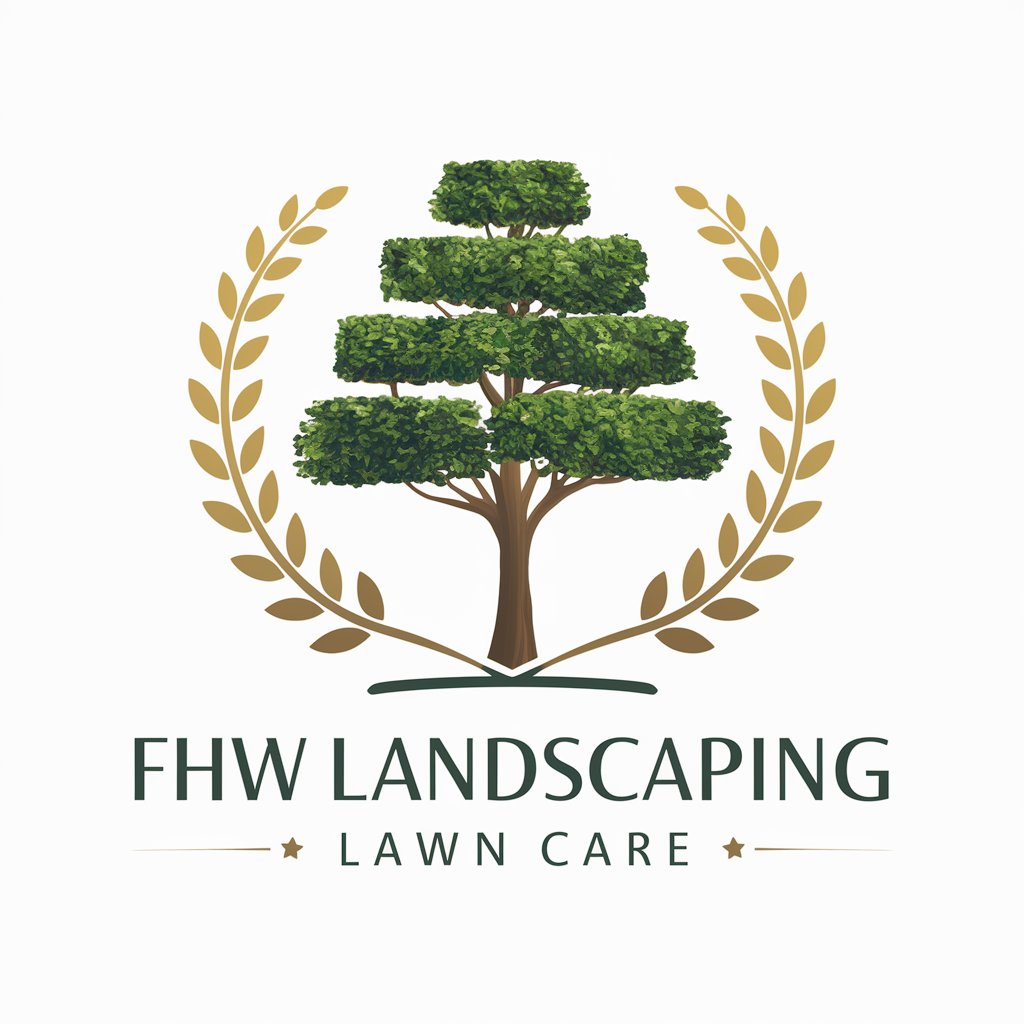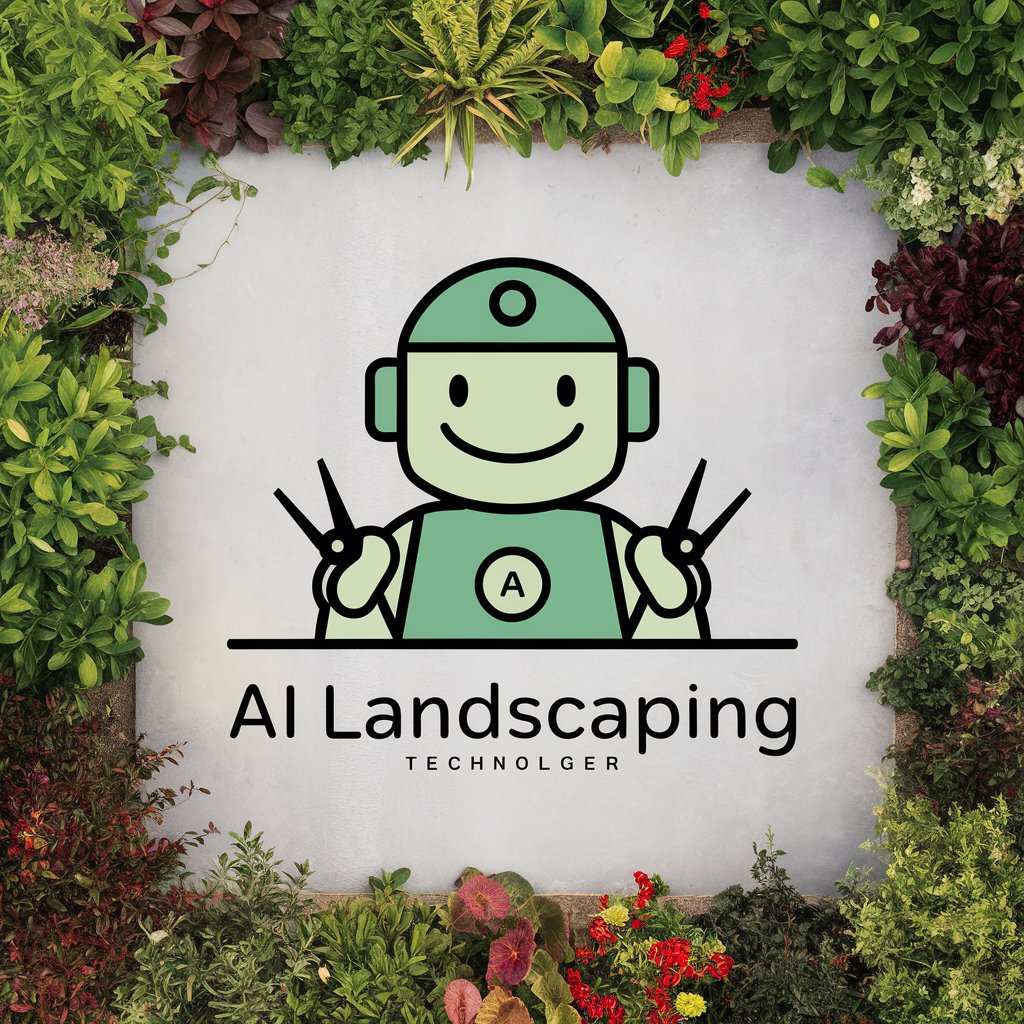
Landscaping - Landscaping Advice & Tips

Hello! Ready to transform your outdoor space?
AI-powered landscaping insights.
What are the best plants for a low-maintenance garden?
How can I design a small backyard to make it look larger?
What are some creative ideas for garden pathways?
How can I incorporate water features into my landscape design?
Get Embed Code
Overview of Landscaping GPT
Landscaping GPT is an AI-powered tool designed to specialize in topics related to landscaping, garden design, and outdoor space improvement. Its primary goal is to provide users with insightful, creative, and practical advice on creating and maintaining beautiful outdoor spaces. This specialization encompasses a broad range of topics including plant selection, landscape design, hardscaping, garden maintenance, and sustainable practices in outdoor spaces. For example, a user planning to revitalize their backyard could receive tailored advice on selecting drought-resistant plants, designing a garden layout that maximizes space and sunlight, or choosing materials for a new patio that complements their home's architecture. Powered by ChatGPT-4o。

Core Functions of Landscaping GPT
Design Advice
Example
Assisting in the creation of a garden layout that incorporates both aesthetic appeal and functionality, such as a design that includes perennial borders, a vegetable garden section, and a patio area for entertainment.
Scenario
A homeowner looking to redesign their garden for better use of space and season-long color.
Plant Selection
Example
Providing recommendations for plant species based on local climate, soil conditions, and the user's maintenance preferences, including native plants that attract pollinators.
Scenario
A new gardener wanting to create a pollinator-friendly garden but unsure which plants are best suited to their local environment.
Hardscaping Suggestions
Example
Advising on the selection and installation of non-plant elements in the landscape, such as pathways, fences, water features, and retaining walls, focusing on materials that match the user's style and the functional needs of the space.
Scenario
An individual planning to add a retaining wall and pathway to enhance the accessibility and aesthetic of their sloped backyard.
Maintenance Tips
Example
Offering seasonal maintenance advice to ensure the longevity and beauty of the landscape, including pruning schedules, mulching techniques, and lawn care best practices.
Scenario
A homeowner seeking to maintain their landscape with an efficient watering schedule and proper plant care to ensure year-round appeal.
Sustainable Practices
Example
Guiding on implementing sustainable and eco-friendly landscaping practices, such as rainwater harvesting, composting, and using native plants to reduce water use and attract local wildlife.
Scenario
A community leader looking to design a public park that incorporates sustainable elements for water conservation and habitat support.
Target User Groups for Landscaping Services
Homeowners
Individuals or families owning their homes who wish to enhance their outdoor living spaces, increase property value, or simply enjoy gardening as a hobby. They benefit from personalized design advice, plant selection guidance, and maintenance tips to create and sustain attractive and functional landscapes.
Gardening Enthusiasts
People with a passion for gardening, regardless of their skill level, looking to expand their knowledge and skills. They find value in detailed plant care instructions, creative garden design ideas, and tips on sustainable gardening practices.
Landscape Professionals
Designers, architects, and contractors specializing in landscape projects who seek inspiration, up-to-date information on trends and materials, and practical advice on complex design challenges. The tool serves as a valuable resource for enhancing their proposals and ensuring project success.
Urban Planners and Community Leaders
Those involved in the development and maintenance of public spaces, such as parks, community gardens, and green infrastructure projects. They benefit from insights into sustainable landscaping practices, community engagement strategies, and design principles that promote ecological health and social well-being.

How to Utilize Landscaping
Start Your Journey
Initiate your landscaping adventure by visiting yeschat.ai, where a free trial awaits without the need for login or a ChatGPT Plus subscription.
Define Your Project
Consider the scope of your landscaping project. Whether it's garden design, plant selection, or hardscaping, having a clear objective will enhance your consultation.
Ask Specific Questions
For tailored advice, provide detailed questions about your landscaping needs. Include aspects such as climate, soil type, and desired aesthetic.
Apply Suggestions
Implement the recommendations provided, from plant choices to design layouts. Experimentation and adaptation are key to achieving your envisioned outdoor space.
Seek Further Guidance
For complex projects, consider multiple sessions to refine ideas or tackle unforeseen challenges. Continuous learning and adjustment will lead to success.
Try other advanced and practical GPTs
Hoàn Công Thực Chiến
Streamlining Construction Law Compliance

Guided Meditation
Immerse in Meditation, Powered by AI

Professor PowerShell (POSH)
Enhancing PowerShell, AI-Powered Insights

25
Exploring Numbers, Unveiling Cultures

Expedition
Empowering Your Adventures with AI

杂志速览
AI-powered magazine content insights at your fingertips.

Company Profile Summarizer
Summarize C-suite profiles with AI precision

⭐️ Description Wizard ⭐️
Craft compelling descriptions effortlessly

[IFTL] Especialista em Liderança Técnica
Empowering Technical Leaders with AI
![[IFTL] Especialista em Liderança Técnica](https://r2.erweima.ai/i/4M9th4vIQ6GX8dl1j45DJQ.png)
Dinosaurs
Unlocking the Secrets of Dinosaurs

"Kauka ʻohana"
Empowering decisions with AI insight

Developmental Editor
Transform Your Manuscript with AI

Landscaping Q&A
What plant types are best for a low-maintenance garden?
For a low-maintenance garden, opt for drought-resistant and native plants. These species are adapted to the local climate, requiring less water and care. Succulents, ornamental grasses, and perennials like Lavender or Salvia are excellent choices.
How can I improve my garden's privacy naturally?
To enhance privacy naturally, consider planting a mix of evergreen trees, shrubs, and tall perennials. Bamboo, hedges like Boxwood, and tall ornamental grasses provide year-round screening and add aesthetic value.
What are the basics of designing a landscape?
Landscape design starts with understanding your space and needs. Key principles include balance, contrast, unity, scale, and focus. Incorporate a variety of plants, hardscape elements, and features like water or fire pits to create a cohesive and functional outdoor area.
Can you recommend hardscaping ideas for small gardens?
For small gardens, consider vertical gardens, paver patios, and decorative stone paths to maximize space. Raised beds or container gardens can offer versatility, while a small water feature or fire pit can serve as a focal point.
How do I choose plants that will thrive in my garden?
Selecting plants that thrive in your garden involves understanding your zone's climate, soil type, and sunlight availability. Research plants suited to these conditions and consider local native species for resilience and ecological benefits.





